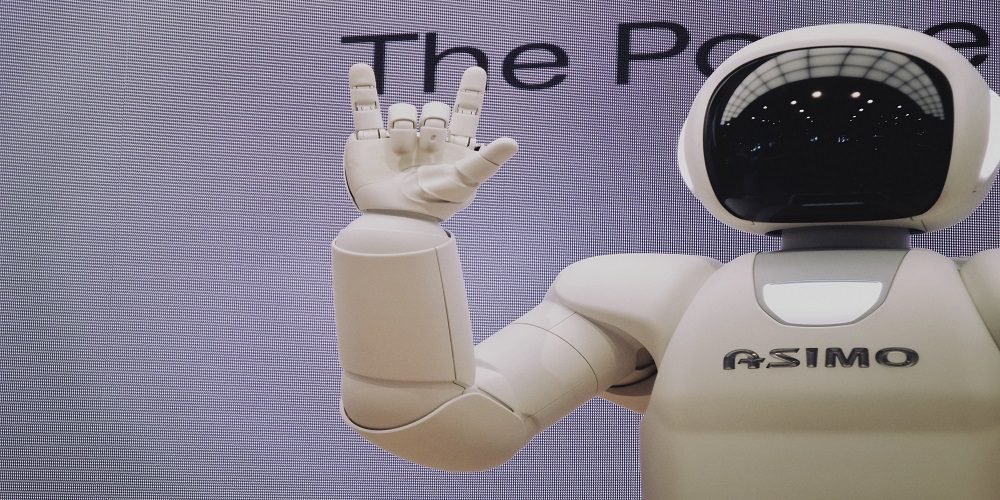Welcome to the world of artificial intelligence! As technology advances at an unprecedented pace, it’s no surprise that AI has become a buzzword in every industry. But within this vast realm, there are two terms that often leave people scratching their heads: generative AI and normal AI. What sets them apart? How do they work? And most importantly, what impact do they have on our daily lives? Today, we embark on a journey to demystify these fascinating concepts and uncover the key differences between generative AI and normal AI.
Introduction
But what exactly is AI? Simply put, it is the simulation of human intelligence processes by machines. This includes learning, reasoning, and self-correction. The goal of AI is to create intelligent systems that can perform tasks that typically require human intelligence.
Defining Generative AI and Normal AI
Artificial Intelligence (AI) is a rapidly growing field that has the potential to revolutionize various industries and aspects of our daily lives. Within this broad category, there are different types of AI, each with its own unique characteristics and applications. Two of the most commonly discussed types are generative AI and normal AI.
Generative AI refers to any system or algorithm that is capable of creating new content or ideas on its own, without being explicitly programmed to do so. In other words, it has the ability to generate new data based on patterns and information it has learned from existing data. This type of AI is often described as “creative” or “imagination-based” because it can produce something completely original that was not previously seen or taught by humans.
On the other hand, normal AI (also known as traditional or narrow AI) refers to systems and algorithms that are designed for specific tasks and can only perform those tasks for which they were programmed. They rely on pre-defined rules and instructions set by humans rather than generating new information independently. Examples of normal AI include virtual personal assistants like Siri and Alexa, self-driving cars, chatbots, facial recognition software, etc.
Key Differences between Generative AI and Normal AI
Generative AI and normal AI are two terms that have gained a lot of attention in recent years, especially with the rapid advancements in technology. While both of these concepts fall under the umbrella of artificial intelligence, they differ significantly in their approaches and capabilities. In this section, we will explore the key differences between generative AI and normal AI to gain a better understanding of these emerging technologies.
1. Definition
The primary difference between generative AI and normal AI lies in their definition. Normal AI refers to machines or systems that are designed to perform specific tasks based on pre-programmed rules or algorithms. These systems rely on existing data sets to make decisions and cannot generate new information. On the other hand, generative AI refers to machines that can create new content or data based on patterns they have learned from existing data sets.
2. Training Data
Normal AI systems require large amounts of training data to perform well, as they rely solely on past data for decision-making. For example, a chatbot designed using normal AI will be able to answer questions related to topics it has been trained on but may struggle with answering questions outside its scope of knowledge. In contrast, generative AI systems can create new content without relying solely on past data. They can learn from smaller datasets and still generate unique outputs.
3. Flexibility
Flexibility is another significant difference between generative AI and normal AI. Normal AIs are limited by their programming; they function within predefined boundaries set by their creators and cannot adapt or evolve beyond their initial capabilities. On the other hand, generative AI systems have more flexibility and can learn, adapt, and generate new outputs based on the data they are exposed to.
4. Creativity
Generative AI is often referred to as creative AI because of its ability to generate new content that has not been explicitly programmed into it. This makes it an excellent tool for tasks such as content creation, music composition, and image generation. In contrast, normal AI relies on pre-defined rules and algorithms and cannot create anything new.
5. Applications
Normal AI is widely used in various industries, such as healthcare, finance, and transportation, for tasks like data analysis, prediction, and automation. Generative AI is still in its early stages but shows potential in fields like entertainment (video game design), art (painting or sculpture), and advertising (content creation).
6. Potential Risks
There are concerns about the potential risks associated with both generative AI and normal AI. Normal AIs may perpetuate biases present in the training data or make decisions that do not align with ethical standards if not programmed correctly. On the other hand, generative AIs have raised concerns about their potential to create fake news or malicious content.
Examples of Generative and Normal AI in Action
To better understand the key differences between generative and normal AI, it is helpful to look at real-world examples. In this section, we will explore some applications of both types of AI and how they differ in their approaches.
1. Image Generation
One of the most well-known applications of generative AI is image generation. This involves using algorithms to create new images that are not based on any existing data. Instead, the AI system learns patterns from a dataset and uses them to generate new, realistic-looking images.
For example, a generative adversarial network (GAN) can be trained on a dataset of human faces and then generate completely new faces with different features, expressions, and backgrounds. This has many potential applications in fields such as entertainment, gaming, advertising, and even law enforcement for creating realistic composite images of suspects.
On the other hand, normal AI approaches use pre-existing data to perform tasks such as image recognition or classification. For instance, an image recognition algorithm may analyze thousands of cat pictures to learn what features make up a cat’s face so that it can accurately identify cats in future images.
Limitations of both types of AI
While both generative AI and normal AI have their own unique strengths, they also come with their own limitations. It is important for us to understand these limitations in order to have a realistic understanding of what these types of AI can currently achieve.
1. Lack of Creativity: One major limitation of normal AI is its lack of creativity. Traditional artificial intelligence systems are designed to follow predefined rules and patterns, making it difficult for them to generate new ideas or think outside the box. They can only perform tasks that they have been specifically programmed to do, limiting their ability to be truly creative.
On the other hand, generative AI has shown promising results in generating unique and innovative outputs. However, even this type of AI has limitations when it comes to true creativity. While generative AI can produce novel outputs based on training data, it still lacks the ability to come up with completely original ideas without any prior input.
2. Dependence on Data: Both types of AI heavily rely on large amounts of high-quality data for training and learning purposes. Without sufficient data, these systems cannot accurately perform tasks or make predictions.
For normal AI, this means that if the input data is biased or incomplete, the output will also reflect those biases and inaccuracies. This could result in incorrect decisions or actions being taken by the system.
Generative AI also relies heavily on data for training, but it goes one step further by using this data to create new content or outputs based on the patterns it has learned. However, this also means that without enough diverse data, the generated outputs may lack diversity and originality.
3. Lack of Common Sense: Both types of AI lack common sense and a human-like understanding of the world. While they can perform specific tasks extremely well, they struggle with common-sense reasoning and understanding context.
For example, a normal AI system designed to recognize images may not be able to understand that a picture of an umbrella is actually a tool used for protection against rain. Similarly, a generative AI system may generate nonsensical or irrelevant outputs if it lacks proper context or understanding of the task at hand.
4. Limited Adaptability: Traditional artificial intelligence systems are designed for specific tasks and are not easily adaptable to new situations or environments. They require reprogramming and retraining in order to perform different tasks.
Generative AI has shown more adaptability compared to normal AI as it can produce different outputs based on the training data it receives. However, it still requires significant amounts of training data for each new task or environment, making it less flexible than human intelligence.
5. Lack of Emotions: One major limitation shared by both types of AI is their inability to experience emotions or empathy. They do not possess emotional intelligence and cannot understand or respond to human emotions.
This can be a significant limitation in applications such as customer service or healthcare, where emotional understanding and empathy are important for building relationships and providing appropriate care.
Conclusion
While generative AI shows promise in overcoming some of the limitations of normal AI, both types of AI still have a long way to go before they can truly replicate human intelligence. These limitations highlight the importance of ethical considerations and the responsible use of AI in order to mitigate potential negative impacts on society.



































